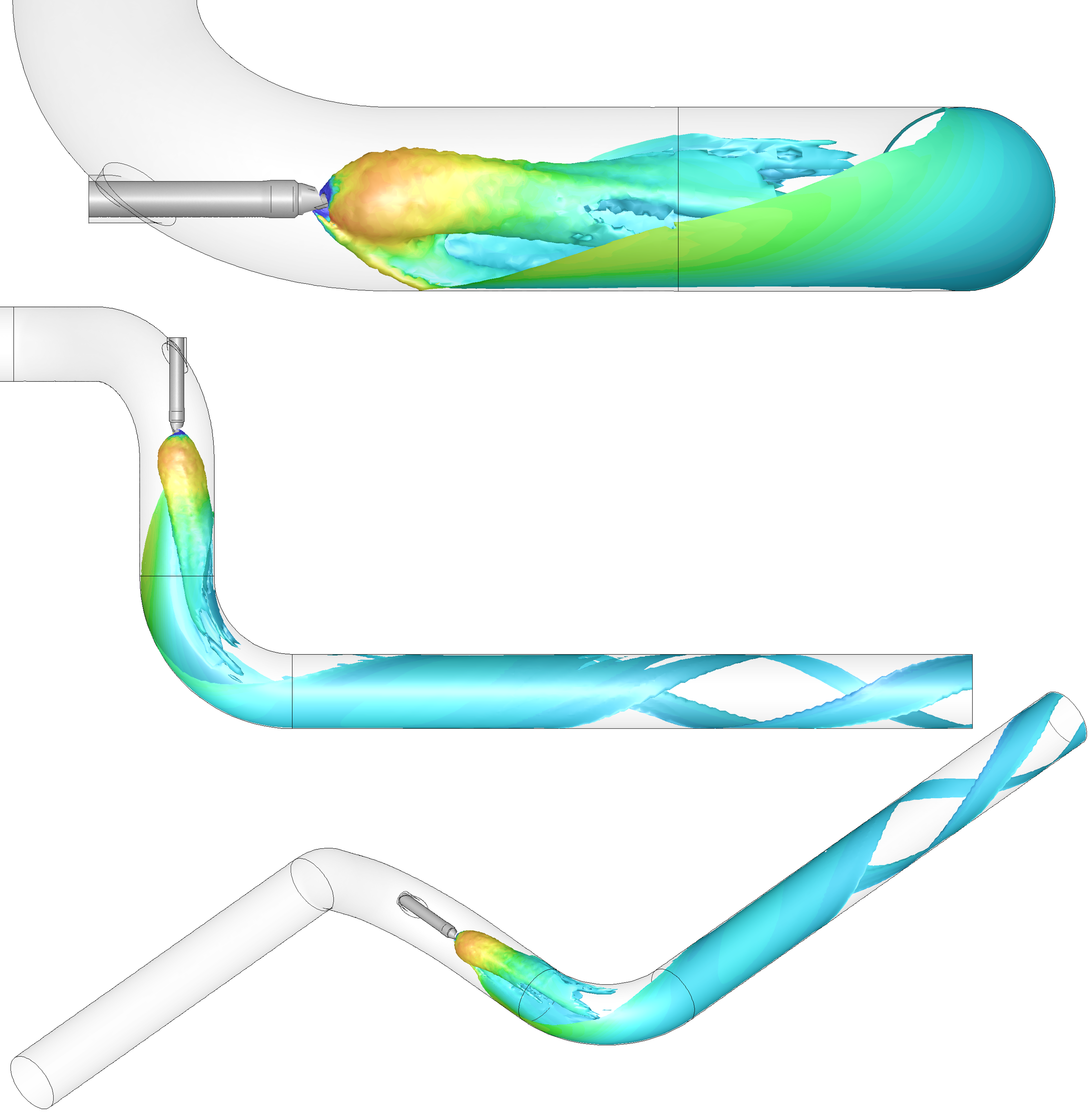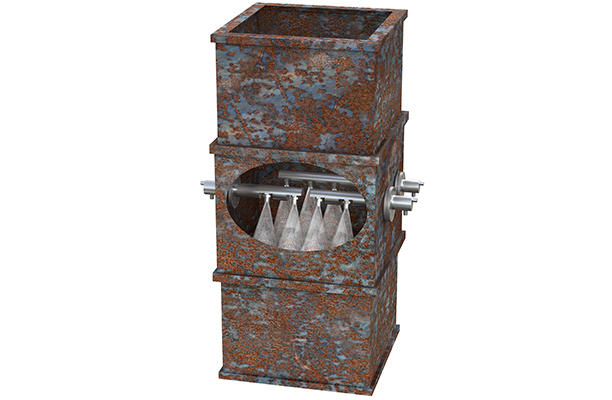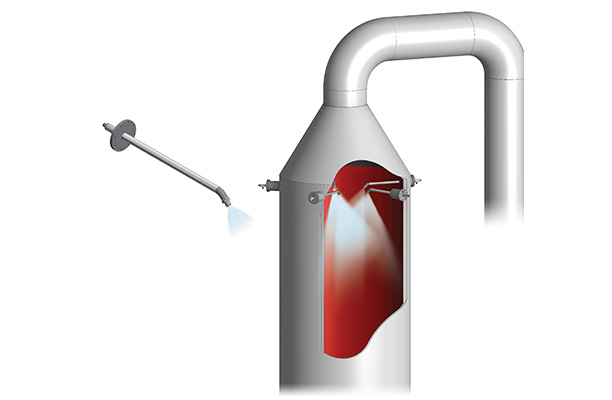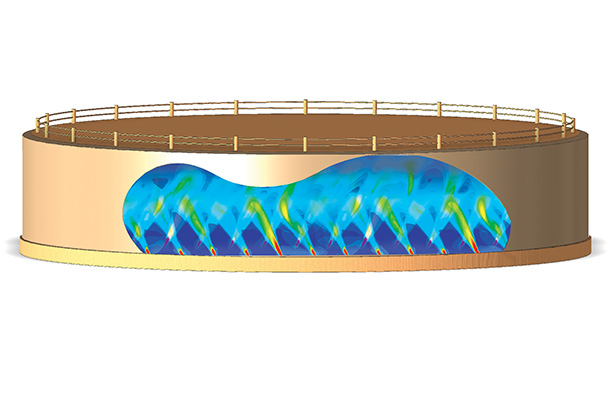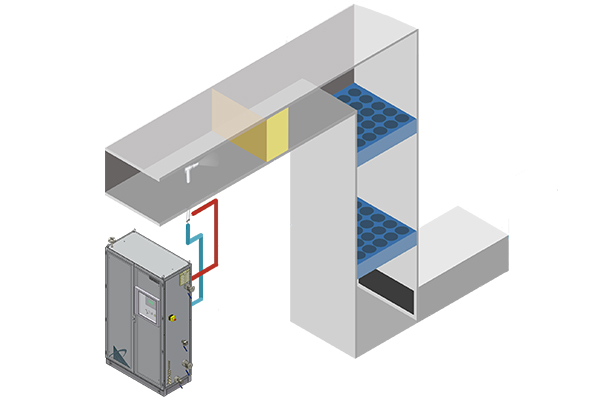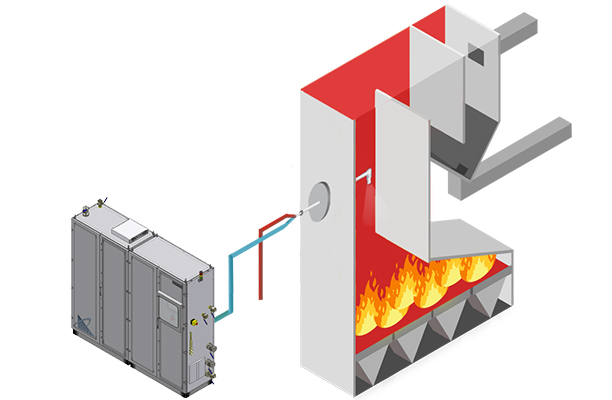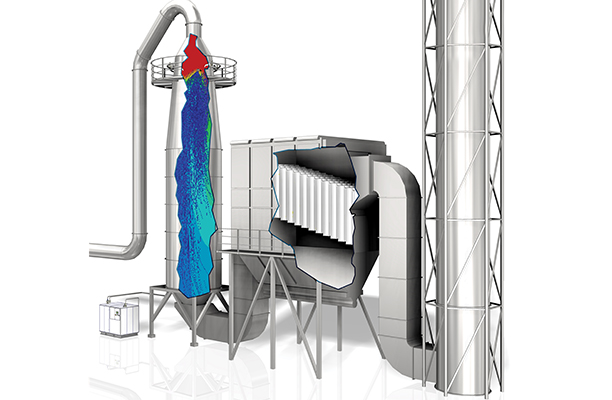How Are Our Modeling Simulations Different?
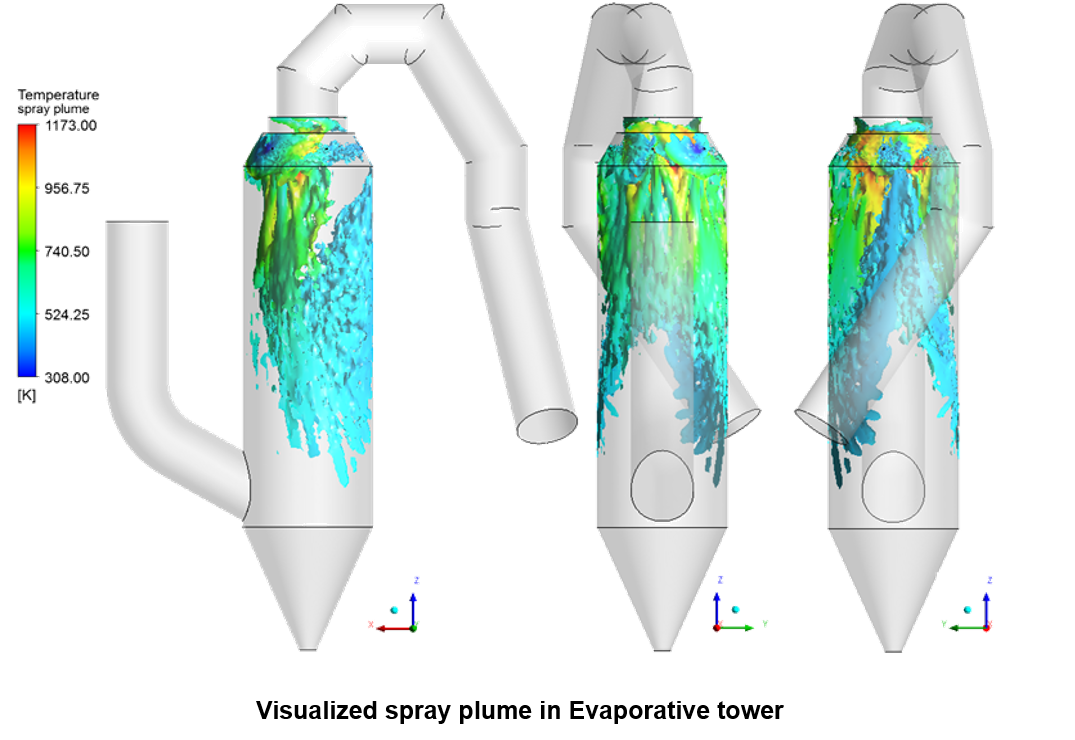
Our models allow examination of liquid and gas flow in scrubbers, towers, ducts and dryers; internal flow characteristics in spray nozzles; gas and liquid mixing in two-fluid nozzles; and wall impact and shadowing. We can provide both standard and custom models.
Standard Models use theoretical numeric codes that require extensive user time commitments and computational resources. Preparing information, inputting data and computation can take weeks or months, depending on the complexity of the model.
Custom Models integrate data collected in our spray labs, including:
- Known, not estimated, model inputs for the spray characteristics to ensure realistic representation of injectors
- Known, not estimated, rheological inputs to ensure adequate capture of physics
- User-defined function (UDF) to model drop-wise condensation with simultaneous evaporation and improve complex mass transfer of urea/ammonia in DeNOx applications
- Accurate and extensive model validations to ensure best practices for simulations
The use of our data and specially equipped hardware allows us to complete projects quickly to help you optimize aspects of your spray operations, including:
- Liquid and gas flow in scrubbers, towers, ducts and dryers
- Spray droplet trajectories and distributions in towers and ducts
- Internal flow characteristics of spray nozzles
- Gas and liquid mixing in two-fluid nozzles
- Wall impact and shadowing
- Pollution reduction effectiveness
- Blending in large vessels
- Solid body cooling in steel industry


